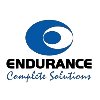Filter interviews by
Sundaram Auto Components Interview Questions and Answers
10 Interview questions
SMPS stands for Switched Mode Power Supply, which is used to convert electrical power efficiently.
SMPS is a type of power supply that uses a switching regulator to convert electrical power efficiently.
It is commonly used in electronic devices such as computers, televisions, and LED lights.
SMPS is preferred over linear power supplies due to its higher efficiency and smaller size.
It operates by rapidly switching the...
PLC stands for Programmable Logic Controller, used in industrial automation to control machinery and processes.
PLCs are used to automate processes in industries such as manufacturing, automotive, and food processing.
They can be programmed to control various devices such as motors, sensors, and valves.
PLCs help improve efficiency, reduce human error, and increase productivity in industrial settings.
Examples of PLC ...
Core and cavity are the two main components of a mold used in injection molding processes.
Core is the part of the mold that creates the internal features of the final product
Cavity is the part of the mold that creates the external features of the final product
They work together to form the shape of the product being manufactured
Examples: In a plastic cup mold, the core would create the hollow interior while the ca...
The material commonly used for core and cavity in tool room engineering is typically tool steel.
Tool steel is a popular choice for core and cavity material due to its high hardness and wear resistance.
Common types of tool steel used include P20, H13, and S7.
Tool steel can be heat treated to achieve desired hardness and toughness properties.
Other materials such as aluminum or pre-hardened steel may also be used dep...
There are two types of sequence gates available: AND gate and OR gate.
AND gate requires all input signals to be true in order to produce a true output signal.
OR gate requires at least one input signal to be true in order to produce a true output signal.
Injection molding process involves melting plastic pellets and injecting them into a mold cavity to create a desired shape.
Plastic pellets are heated and melted in a barrel
The molten plastic is then injected into a mold cavity
The plastic is allowed to cool and solidify in the mold
The mold is opened and the final product is ejected
Mold temperature controller regulates the temperature of the mold during the injection molding process.
The controller uses a heating and cooling system to adjust the temperature of the mold.
It helps in maintaining consistent and optimal temperature for the molding process.
Temperature sensors are used to monitor and control the temperature.
The controller can be set to specific temperature ranges based on the materi...
Injection moulding is a manufacturing process where molten material is injected into a mould cavity to create a solid object.
Molten material is injected into a mould cavity under high pressure
The material cools and solidifies to form the desired shape
Commonly used for producing plastic parts in mass production
Used in various industries such as automotive, medical, and consumer goods
Mechanical stoppers are used to limit the movement of a mechanical component or system.
Mechanical stoppers are commonly used in machinery to prevent overtravel or to establish a specific position.
They can be adjustable or fixed depending on the application.
Examples include limit switches, physical barriers, and adjustable bolts.
Proper maintenance and inspection of mechanical stoppers are crucial to ensure safe and...
Injection moulding is a manufacturing process used to produce parts by injecting material into a mould.
Injection moulding involves melting a material and injecting it into a mould cavity
The material solidifies inside the mould and is then ejected as a finished part
Common materials used in injection moulding include plastics, metals, and glass
Sundaram Auto Components Interview Experiences
15 interviews found
(5 Questions)
- Q1. Quality control not complaint
- Q2. Customer certification
- Q3. Cast save company successfully
- Q4. Discipline performance single piece online
- Q5. All team work successful win
Leak testing quality control engineering
(3 Questions)
- Q1. Mechanical stopper use
- Ans.
Mechanical stoppers are used to limit the movement of a mechanical component or system.
Mechanical stoppers are commonly used in machinery to prevent overtravel or to establish a specific position.
They can be adjustable or fixed depending on the application.
Examples include limit switches, physical barriers, and adjustable bolts.
Proper maintenance and inspection of mechanical stoppers are crucial to ensure safe and effi...
- Q2. PLC meaning are used
- Ans.
PLC stands for Programmable Logic Controller, used in industrial automation to control machinery and processes.
PLCs are used to automate processes in industries such as manufacturing, automotive, and food processing.
They can be programmed to control various devices such as motors, sensors, and valves.
PLCs help improve efficiency, reduce human error, and increase productivity in industrial settings.
Examples of PLC brand...
- Q3. Smps meaning are used
- Ans.
SMPS stands for Switched Mode Power Supply, which is used to convert electrical power efficiently.
SMPS is a type of power supply that uses a switching regulator to convert electrical power efficiently.
It is commonly used in electronic devices such as computers, televisions, and LED lights.
SMPS is preferred over linear power supplies due to its higher efficiency and smaller size.
It operates by rapidly switching the inpu...
Interview Preparation Tips
Post so vaccine
I applied via Walk-in and was interviewed in Nov 2023. There were 2 interview rounds.

(2 Questions)
- Q1. Self introduction
- Q2. Self introduction and over all questions
Interview Preparation Tips
I applied via Walk-in and was interviewed in Jan 2023. There were 3 interview rounds.

Injection Moulding Working Process.
(2 Questions)
- Q1. What is injection Moulding?
- Ans.
Injection moulding is a manufacturing process used to produce parts by injecting molten material into a mould.
Injection moulding is a widely used method for manufacturing plastic parts.
It involves injecting molten material, typically plastic, into a mould cavity.
The molten material solidifies inside the mould, taking its shape.
The mould is then opened, and the finished part is ejected.
Injection moulding allows for high...
- Q2. Injection Molding Defects?
- Ans. Flash Short Shots Sink Marks Burn Marks Weld Lines Flow Lines
Interview Preparation Tips
- Mechanical Engineering
- Plastic Injection Molding
- Electrical Machines
*5s.
*Work Time.
I applied via Walk-in and was interviewed in Nov 2022. There were 2 interview rounds.

(3 Questions)
- Q1. Normal General questions.
- Q2. Your work experience..
- Q3. Your work knowledge.
Interview Preparation Tips
- Nothing.
I appeared for an interview before Jan 2024.
(2 Questions)
- Q1. Earlier it was said that they used to work
- Q2. How many years of experience do you have
- Ans.
I have 5 years of experience as a CMM Operator.
I have 5 years of experience operating Coordinate Measuring Machines.
I am proficient in programming and operating CMM equipment.
I have worked with various industries using CMM technology.
I have experience in quality control and inspection processes.
I am familiar with GD&T principles and metrology standards.
I applied via Naukri.com and was interviewed in Apr 2022. There was 1 interview round.
(3 Questions)
- Q1. Self . College. Hobit
- Q2. Technical. Working experience
- Q3. Salary and my family
Interview Preparation Tips
I applied via Walk-in and was interviewed in Mar 2022. There were 2 interview rounds.

(2 Questions)
- Q1. My self introduction My experience
- Q2. My qualifications And what ever...
Interview Preparation Tips
I applied via Walk-in and was interviewed before Oct 2022. There were 2 interview rounds.

(3 Questions)
- Q1. How the mold temperature controller works
- Ans.
Mold temperature controller regulates the temperature of the mold during the injection molding process.
The controller uses a heating and cooling system to adjust the temperature of the mold.
It helps in maintaining consistent and optimal temperature for the molding process.
Temperature sensors are used to monitor and control the temperature.
The controller can be set to specific temperature ranges based on the material be...
- Q2. How injection molding process works
- Ans.
Injection molding process involves melting plastic pellets and injecting them into a mold cavity to create a desired shape.
Plastic pellets are heated and melted in a barrel
The molten plastic is then injected into a mold cavity
The plastic is allowed to cool and solidify in the mold
The mold is opened and the final product is ejected
- Q3. How many types of sequence gates available
- Ans.
There are two types of sequence gates available: AND gate and OR gate.
AND gate requires all input signals to be true in order to produce a true output signal.
OR gate requires at least one input signal to be true in order to produce a true output signal.
Interview Preparation Tips
I applied via Walk-in and was interviewed before Oct 2022. There were 3 interview rounds.

(2 Questions)
- Q1. What is core and cavity
- Ans.
Core and cavity are the two main components of a mold used in injection molding processes.
Core is the part of the mold that creates the internal features of the final product
Cavity is the part of the mold that creates the external features of the final product
They work together to form the shape of the product being manufactured
Examples: In a plastic cup mold, the core would create the hollow interior while the cavity ...
- Q2. What is the material used for core and cavity
- Ans.
The material commonly used for core and cavity in tool room engineering is typically tool steel.
Tool steel is a popular choice for core and cavity material due to its high hardness and wear resistance.
Common types of tool steel used include P20, H13, and S7.
Tool steel can be heat treated to achieve desired hardness and toughness properties.
Other materials such as aluminum or pre-hardened steel may also be used dependin...
(2 Questions)
- Q1. Tell me about yourself
- Q2. Are you ready to shift to any location
Interview Preparation Tips
Top trending discussions






Sundaram Auto Components Interview FAQs
Some of the top questions asked at the Sundaram Auto Components interview -
The duration of Sundaram Auto Components interview process can vary, but typically it takes about less than 2 weeks to complete.
Tell us how to improve this page.
Sundaram Auto Components Interviews By Designations
- Sundaram Auto Components Tool Room Engineer Interview Questions
- Sundaram Auto Components Quality Inspector Interview Questions
- Sundaram Auto Components Production Engineer Interview Questions
- Sundaram Auto Components Electrical Maintenance Engineer Interview Questions
- Sundaram Auto Components CMM Operator Interview Questions
- Sundaram Auto Components Service Head Interview Questions
- Sundaram Auto Components Production Incharge Interview Questions
- Sundaram Auto Components Graduate Engineer Trainee (Get) Interview Questions
- Show more
Interview Questions for Popular Designations
Overall Interview Experience Rating
based on 12 interview experiences
Difficulty level
Duration
Interview Questions from Similar Companies
Sundaram Auto Components Reviews and Ratings
based on 285 reviews
Rating in categories
|
Assistant Manager
57
salaries
| ₹9 L/yr - ₹17 L/yr |
|
Senior Engineer
41
salaries
| ₹5 L/yr - ₹10.2 L/yr |
|
Quality Inspector
36
salaries
| ₹1.4 L/yr - ₹4 L/yr |
|
Production Engineer
31
salaries
| ₹2.1 L/yr - ₹6.6 L/yr |
|
Quality Engineer
15
salaries
| ₹2 L/yr - ₹7.6 L/yr |

JBM Group

Subros

Varroc Group

Endurance Technologies
- Home >
- Interviews >
- Sundaram Auto Components Interview Questions















